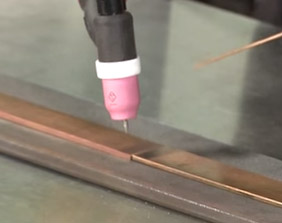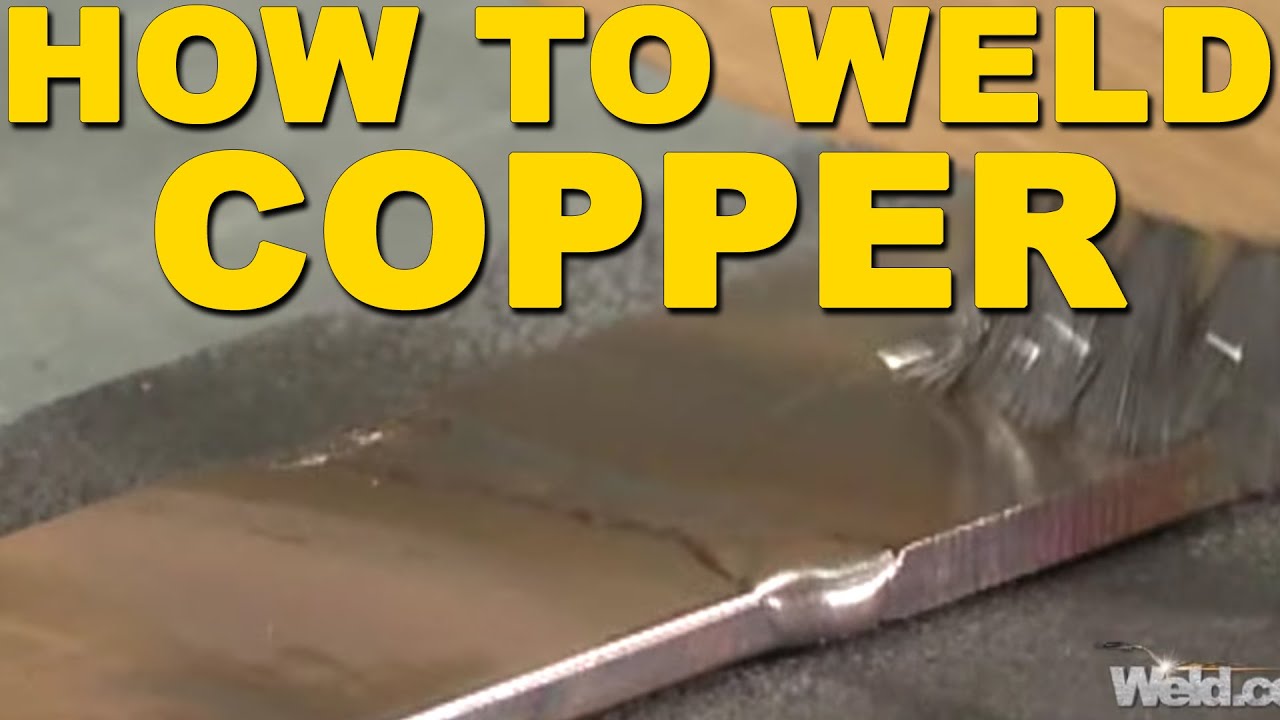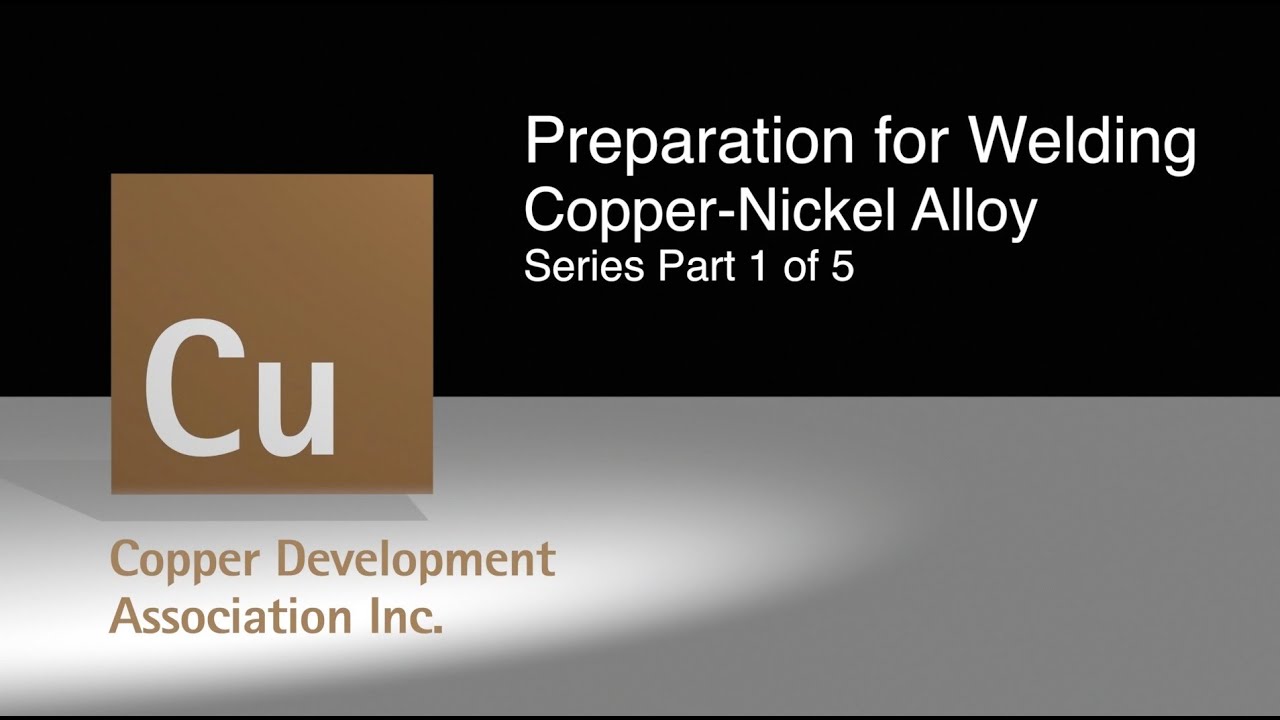Summary
Copper welding is not hard.
The heat required for this type of welding is approximately twice that required for steel of similar thickness.
Copper has a high thermal conductivity. To offset this heat loss, a tip one or two sizes larger than that required for steel is recommended.
When welding large sections of heavy thicknesses, supplementary heating is advisable. This process produces a weld that is less porous.
Copper may be welded with a slightly oxidizing flame because the molten metal is protected by the oxide which is formed by the flame. If a flux is used to protect the molten metal, the flame should be neutral.
Oxygen-free copper (deoxidized copper rod) should be used rather than oxygen-bearing copper for gas welded assemblies.
The rod should be of the same composition as the base metal.
Overview
In welding copper sheets, the heat is conducted away from the welding zone so rapidly that it is difficult to bring the temperature up to the fusion point.
It is often necessary to raise the temperature level of the sheet in an area 6.0 to 12.0 in. (152.4 to 304.8 mm) away from the weld.
The weld should be started at some point away from the end of the joint and welded back to the end with filler metal being added.
After returning to the starting point, the weld should be started and made in the opposite direction to the other end of the seam.
During the operation, the torch should be held at approximately a 60 degree angle to the base metal.
It is advisable to back up the seam on the underside with carbon blocks or thin sheet metal to prevent uneven penetration.
These materials should be channeled or undercut to permit complete fusion to the base of the joint.
The metal on each side of the weld should be covered to prevent radiation of heat into the atmosphere.
This would allow the molten metal in the weld to solidify and cool slowly.
Tip: 100% helium will gas will provide the heat levels needed to weld copper.
Copper Welding Video
Overview
In welding copper sheets, the heat is conducted away from the welding zone so rapidly that it is difficult to bring the temperature up to the fusion point. It is often necessary to raise the temperature level of the sheet in an area of 6.0 to 12.0 in. (152.4 to 304.8 mm) away from the weld. The weld should be started at some point away from the end of the joint and welded back to the end with filler metal being added. After returning to the starting point, the weld should be started and made in the opposite direction to the other end of the seam. During the operation, the torch should be held at approximately a 60-degree angle to the base metal.
It is advisable to back up the seam on the underside with carbon blocks or thin sheet metal to prevent uneven penetration. These materials should be channeled or undercut to permit complete fusion to the base of the joint. The metal on each side of the weld should be covered to prevent radiation of heat into the atmosphere. This would allow the molten metal in the weld to solidify and cool slowly.
Tip: 100% helium will gas will provide the heat levels needed to weld copper.

Copper Welding Speed
The welding speed should be uniform. The end of the filler rod should be kept in the molten puddle.
During the entire welding operation, the molten metal must be protected by the outer flame envelope.
If the metal fails to flow freely during the operation, the rod should be raised and the base metal heated to a red heat along the seam.
The weld should be started again and continued until the seam weld is completed.
Welding Thin Sheets
When welding thin sheets, the forehand welding method is preferred.
The backhand method is preferred for thicknesses of 1/4 in. (6.4 mm) or more.
For sheets up to 1/8 in. (3.2 mm) thick a plain butt joint with squared edges is preferred.
For thicknesses greater than 1/8 in. (3.2 mm) the edges should be beveled for an included angle of 60 to 90 degrees. This will ensure penetration with spreading fusion over a wide area.
Butt, lap, and scarf joints are used in brazing operations, whether the joint members are flat, round, tubular, or of irregular cross-sections.
Clearances to permit the penetration of the filler metal, except in large diameter pipe joints, should not be more than 0.002 to 0.003 in. (0.051 to 0.076 mm).
The clearances of large diameter pipe joinings maybe 0.008 to 0.100 in. (0.203 to 2.540 mm). The joint may be made with inserts of the filler metal or the filler metal may be fed in from the outside after the joint has been brought up to the proper temperature.
The scarf joint is used in joining bandsaws and for joints where the double thickness of the lap is not desired.
Welding Copper Nickel Alloy
Copper-nickel alloys are used where high purity, resistance to biofouling and bacteria and extreme corrosion resistance are required. They are good strength and formability. It is not difficult to weld if proper procedures and environmental precautions are used.
The two main grades of copper-nickel alloys are 90/10 copper to nickel and 70/30 (70% copper and 30% nickel). These are also called solution alloys. This means any amount of copper is soluble in nickel and any amount of nickel is soluble in copper.
When working with copper-nickel alloys no preheat and post-weld heat treatments are needed. Neither the weld or heat-affected zone are hardened by the heat of welding.
Introduction to Welding Copper Nickel Alloy
All five videos from the Copper Association are available below.
TIG Welding of Copper Nickel Alloy:
Pipe Welding of Copper Nickel Alloy:
Shielded Metal Acr Welding of Copper Nickel Alloy
Pulsed MIG Welding Copper Nickel Alloy:

